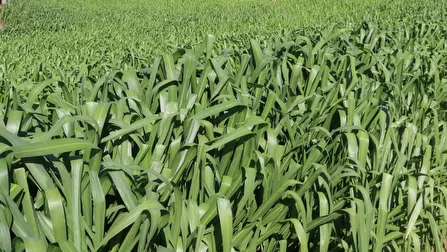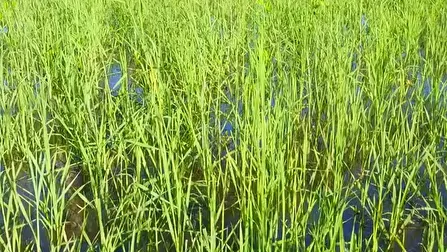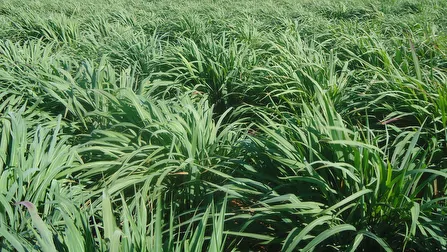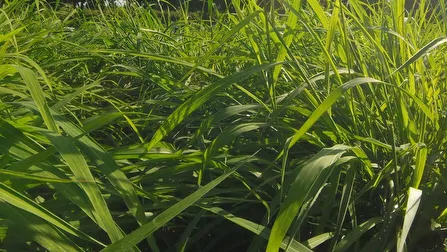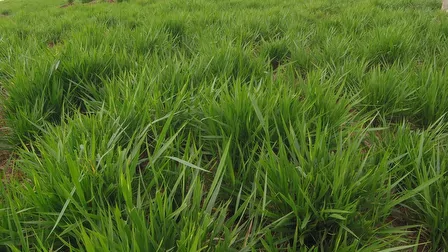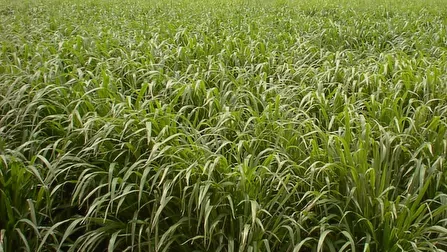Indicação
A Cultivar MG19 Oásis possui uma boa produção de forragem, boa qualidade nutricional e maciez da forragem produzida, sendo recomendada para produção de leite e carne, nas fases de cria, recria e engorda. É indicado para solos de média a alta fertilidade, no sistema intensivo de pastejo rotacionado com intervalos de descanso de 25 dias no período chuvoso.
Genética Matsuda
Média a baixa
Urochloa brizantha cv. MG19 Oásis
Brachiaria brizantha cv. MG19 Oásis
Média a alta fertilidade
Pastejo direto, feno e silagem
15 a 17 t/ha/ano de matéria seca (M.S.)
1,20m
Muito boa (60%)
Excelente
Excelente
Alta tolerância
Média
9 a 12%
Utilização e Manejo
A MG19 Oásis é recomendada para bovinos em fase de cria, recria e engorda. Não é recomendada para os equídeos. O crescimento semiereto de sua touceira e boa rebrota facilitam o manejo desta gramínea, além de proporcionar boas características para o fechamento do solo. O pastejo ideal deve ocorrer em plantas com o máximo de 25 dias de vedação no período chuvoso ou com a altura de 50 - 60cm. O pastejo deve ocorrer até 20cm do solo aproximadamente.
Origem
Material proveniente da Matsuda Genética que foi multiplicado para iniciar o processo de seleção e avaliação em 2013. Esse programa teve como objetivo a obtenção de indivíduos superiores com as características desejadas: boa distribuição estacional da produção de forragem, talos mais macios, boa produção de sementes, boa recuperação após eventos prejudiciais (ex. cigarrinha das pastagens). Recombinações a campo e seleções permitiram obter plantas mais agressivas, boa palatabilidade e bom consumo pelos animais.
Características Agronômicas
A Cultivar MG19 Oásis possui como principais características a boa produção de forragem, boa qualidade nutricional e maciez da forragem produzida. Apresenta rebrota vigorosa e rápido crescimento. Possui boa adaptação à seca e à temperaturas amenas. Essas características são semelhantes à MG5 Vitória, com a diferença que a MG19 Oásis possui talos mais macios e digeríveis. As cigarrinhas das pastagens podem atacar a MG19 Oásis, porém os sintomas são amenos. Em avaliações a campo na região de Mirante do Paranapanema/SP, apesar do ataque as plantas não apresentaram sintomas.

